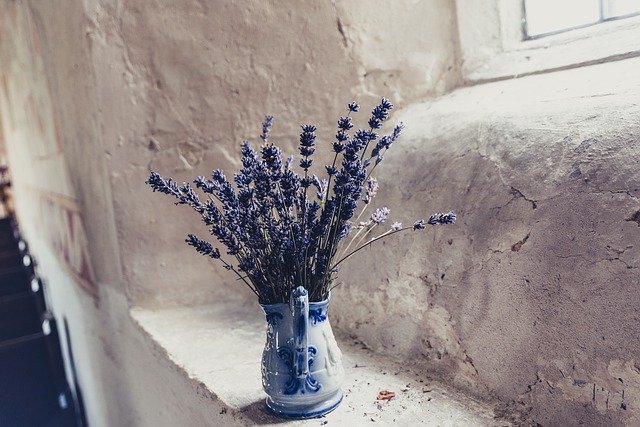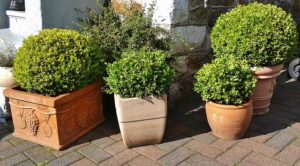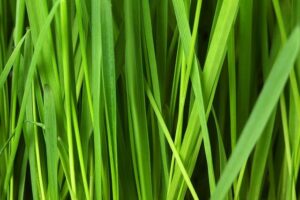Lavender is an easy-to-grow flower that instils peace, creates a blanket of colour, and has an unrivalled serene fragrance. The silvery-grey foliage contrasts nicely with the flowers, which can be blue, purple, mauve, pink, white, or green. While you may not have seen some of these colours before, they are not new; for example, the white variety has been grown for approximately 400 years.
Table of Contents
Types of Lavender
There are 450 varieties of lavender that are categorised into 45 different species. There is the potential of more varieties of lavender that have yet to be discovered, especially since there are a handful of hybrids.
- Ballerina, Spanish Lavender (Lavandula Stoechas)
His Spanish Lavender has lovely dark purple flower corollas with white bracts on top that age to the palest ballerina pink. This stoechas Lavender is both visually appealing and fragrant. This Lavender will look great in your flower garden. Lavandula stoechas Lavandula stoechas Lavandula sto Ballerina is hardy in Zones 8-10 and grows to be 1 1/2 feet tall and 2 feet wide. Plant Ballerina where it will be noticed, such as next to a patio or entrance walkway, where the unusual colour of the Lavender flowers can be fully appreciated. In colder climates, it can be grown in a container and moved to a well-lit, sheltered garden shed during the winter months.
- Kew Red, Spanish Lavender (Lavandula Stoechas)
Lavandula stoechas ‘Kew Red,’ also known as Rabbit Ears or Butterfly Lavender, is a typical Spanish Lavender with pineapple-like blooms and pink bracts at the top. Whereas English and French lavenders produce tall, spiky blooms, the Kew Red’s blooms remain more compact with the plant itself. Kew Red Spanish Lavender blooms earlier than other lavender varieties. Kew Red Lavender Plants are sure to be eye-catching additions to your lavender garden. Kew red is a show stopper in your rock garden, whether paired with ornamental grasses or as a stand-alone. This lavender plant’s talent lies in its beauty, as it is not as fragrant as English or French Hybrid Lavenders. While it does not attract as many butterflies and hummingbirds, its fuchsia-colored blooms are a favourite of honeybees.
This lavender grows two feet tall and two feet wide and blooms from mid-may to frost. Plant in full sun, as with other lavenders, in well-drained soil. After blooming, prune. Other lavender varieties grow better in humid areas than Kew Red Lavender.
- Anouk, Spanish Lavender (Lavandula Stoechas)
This flowering shrub is lovely and aromatic, with purple flower spikes with deep pink-purple petals at the top; ideal for borders, cottage gardens, and containers. From early to late summer, Anouk Spanish Lavender has masses of beautiful spikes of fragrant purple flowers with hot pink overtones rising above the foliage, which are most effective when planted in groupings. The flowers make excellent cut flowers. It has lovely greyish green foliage. The fragrant needles are highly ornamental and change to a coppery-bronze colour in the fall. The fruit has no ornamental value. Anouk Spanish Lavender is a mounded, dense multi-stemmed evergreen shrub. It adds a fine and delicate texture to the landscape composition, which should be used to its full potential.
This is a low-maintenance shrub that can be pruned at any time. It is a good choice for attracting bees and butterflies to your yard, but it is not particularly appealing to deer, who prefer tastier treats. It does not have any significant drawbacks.
- Betty’s Blue, English Lavender (Lavandula Angustifolia)
Lavandula angustifolia ‘Betty’s Blue’ grows into a compact bush with a height of 60-75 cm and a diameter of 75-90 cm. It has gray-green foliage that changes colour in the autumn.
Its dark blue-violet flowers are highly aromatic. It blooms in late spring or early summer, and it has a longer flowering period than most other English lavender varieties. Another intriguing aspect of the plant is its remarkable salt resistance.
Lavandula angustifolia ‘Betty’s Blue’ produces flowers that can be used both fresh and dried, and its leaves are edible.
- Lavenite Petite, English Lavender (Lavandula Angustifolia)
The flowers are pom-pom shaped and dense, making this lavender a one-of-a-kind variety. They have a strong fragrance and a bright light purple colour. The plant blooms in mid to late spring and is known as one of the most beautiful lavender strains. Lavenite Petite attracts a large number of butterflies and bees.
- Hidcote, English Lavender (Lavandula Angustifolia)
Plants that are colourful and fragrant, edible, and attract pollinators are a win-win situation in the garden. One such beauty is Lavender Hidcote. It is also deer resistant, which is useful in some areas of the country, and the flowers can be dried for long-lasting, scented bouquets. Lavender Hidcote thrives in sunny, well-drained locations. It makes an impressive display when planted in a mass, but it also stands out nicely as part of a herb garden or even a mixed container.
It is a member of the English group, which is likely the most well-known. These are Mediterranean natives, but Hidcote is the most hardy of the English cultivars. It is a true lavender that has been grown for its oil and dried flowers.
- Impress Purple, Hybrid (Lavandula x Intermedia)
Lavandula x intermedia (lavandins) are a cross between Lavandula Angustifolia and Lavandula Latifolia (“broad leaf”). The Angustifolia is well-known for its fragrance, while the Latifolia (also known as spike lavender) is well-known for its tall spikes. Intermedias are frequently cultivated for their oil, which is used in bath and body products. They are not suitable for culinary use because they contain more camphor and have a more medicinal flavour. Because intermedias are larger plants in general, they require a little more space than angustifolias.
- Hidcote Giant, Hybrid (Lavandula x Intermedia)
Light violet flowers tower on long steps and spread beautifully on this lavender. Hidcote Giant is a lavender that has won awards for both its beauty and its strong fragrance. Lavender is commonly used in bouquets. It blooms in the middle to late summer and attracts bees and butterflies.
- Grosso, Hybrid (Lavandula x Intermedia)
Lavandula ‘Grosso’ is a traditional French hybrid lavender grown for its fragrant dark blue flower spikes and vigorous growth. ‘Grosso’ is a large grower with nice wide gray-green foliage that blooms profusely, providing an ample harvest of flowers for lavender wands, sachets, and culinary use. This is an excellent honeybee plant that blooms in the middle of summer, after the English lavender has finished flowering in the early summer. ‘Grosso’ has good cold hardiness for a French hybrid and thrives in well-drained soils in zone 6 winters.
Lavandula ‘Grosso’ is only hardy to zone 10 in dry, arid climates like the West. This is not recommended for planting in wet, humid areas like the Gulf Coast, Southern Texas, or Florida.
- Portuguese Lavender (Lavandula Latifola)
Lavandula latifolia is a fragrant shrub that grows to be 30–80 cm tall. The evergreen leaves are 3–6 cm long and 5–8 mm wide.
The flowers are pale lilac in colour and are produced on spikes 2–5 cm long at the top of slender, leafless stems 20–50 cm long. Depending on the weather, flowers bloom from June to September.
The fruit is an indehiscent nut with a hardened pericarp. It is made up of four small nuts that are frequently locked inside the calyx tube. It grows from 0 to 1,700 metres above sea level.
- Egyptian Lavender (Lavandula Multifida)
Because of its furry bipinnate leaves, Egyptian lavender is also known as fern-leaf lavender. This variety has a distinctive aroma and is less sweet than others. Once established, the plant can be ignored as long as it is planted in well-drained soil and has plenty of room to grow. Late in the spring, the flowers bloom.
- French Lavender (Lavandula Dentata)
The scent and colour of French lavender are more delicate than those of other lavenders. The blooms last the longest of any lavender, throughout the summer and possibly into the fall. This variety is quite large, reaching two to three feet in height and width. Another significant distinction is that French lavender does not tolerate high temperatures.
How to care for a lavender plant?
- Placement
Lavender should be given as much light as possible when grown indoors. It performs best in a south-facing window or in a location with at least three to four hours of direct sunlight. Rotate the pot once a week to ensure even growth and flowering. Without sufficient light, the lavender plant will develop weak, spindly growth, cease to produce flowers, and become more susceptible to disease. Indoors, good ventilation and air circulation are essential, but do not place the plant where it will be directly exposed to forced-air heat.
- Watering
When watering, drench the soil thoroughly and allow it to dry slightly between waterings. Feel the soil with your finger to check for moisture. Rot can be caused by overwatering and keeping the soil constantly moist. However, if the soil becomes completely dry, the lavender will react by yellowing the lower leaves. If the lavender is moved outside in the spring, keep in mind that it will dry out faster and require more frequent watering.
- Pruning
Cutting branches for flower harvesting promotes new growth and bushiness. If more bushiness is desired, prune on a regular basis. Flowers are produced at the branch tips, and frequent tip pruning will reduce flowering.
- Fertilizing
During the spring and summer, apply a half-strength all-purpose, water-soluble fertiliser every four weeks.
- Potting
After one year, or in early spring, repot into an 8′′ pot with good-quality potting soil.
- Toxicity
This plant should not be consumed. While the majority of plants are non-toxic, some do contain toxins.
Reasons to buy artificial lavender
Faux flowers are an amazing accessory that anyone can use to bring some greenery and life into their homes; people have been making artificial flowers out of silk for about 1,500 years. There are numerous ways to use plants, ranging from small succulents to large plants, to make your home appear fuller, fresher, and brighter.
- Long Lasting
Fake flowers will never wilt or droop and will continue to look realistic and lovely for many years. They are extremely long-lasting, so you can enjoy them without worry.
- No Maintenance
One of the main reasons we like artificial flowers is that you don’t have to worry about caring for them. From daily watering to potting them on, you can sit back and relax.
Our Best Artificial Lavender Plant Picks
Artificial Lavender flowers, the floweret is made of plastic, uses plastic as the surface of the stem. Skeleton is made up of metal wires and wrapped by plastics. Package includes 10 bundles, each artificial lavender flowers has 5 stems, and 2 branches flowers on each stem, the total length of the bouquet is approx. 30 cm / 11.81 inch.
Plastic artificial Lavender flowers are environment friendly, no odour, they don’t need tedious maintenance, don’t need to change the water will also ensure the flower will bloom, just organize the lavender before you placed them.
Technical Details
Brand: MUCHENG
Package Dimensions: 34.4 x 18.7 x 9.7 cm; 260 Grams
Material: Plastic
Item Weight: 260 g
Artificial lavender flowers have a realistic appearance and bright colours. Compared to real flowers, it is difficult to distinguish between true and false. Contains ten artificial lavender flowers with five branches, 37 cm long, durable plastic lavenders, long-term use.
Technical Details
Brand: Ouddy
Package Dimensions: 39.7 x 13.7 x 8.1 cm; 230 Grams
Material: Plastic
Item Weight: 230 g
The best choice for indoor or outdoor decoration, home, cafe, garden, patio, party, celebration and other occasions. These vivid flowers are non-toxic and no odor, especially flocking process simulate the feel of real lavenders.
Technical Details
Brand: LERT
Package Dimensions: 38 x 12 x 4 centimetres
Material: Plastic
Item Weight: 100 g
The package includes 12 bundles of artificial lavender flowers; Each artificial lavender flowers has 5 stems, and 5 flowers on each stem, the total length of the bouquet is approx36 cm/14.2 inch. The artificial lavender flowers are made of plastic with comfortable touch, reusable and have a long service life, never wither and fall, Letting you experience the joy of relaxing in the ideal Home.
Technical Details
Brand: Homcomodar
Color: D-purple
Package Dimensions: 32.8 x 24.4 x 10 cm; 430 Grams
Material: Plastic
Item Weight: 430 g
Our faux purple lavender flower is made of plastic materials, durable, eco-friendly, recyclable and sturdy. The artificial plants are also harmless to your families health. These bright purple flowers will remain vivid and not wither with continued use. A great alternative for fresh and dried flowers.
These plastic plants are UV resistant and never fade. They will never die off and easy take care of it can against fierce wind rainstorm and insolation. You can adjust the artificial lavender flowers and create a bouquet style as you like, which fits perfectly outdoor use in all weather.
Technical Details
Brand: PanBeiQi
Package Dimensions: 33 x 12 x 6.5 cm; 189 Grams
Material: Plastic
Item Weight: 189 g








